Car Sputters After Getting Gas: Top 10 Causes And Solutions
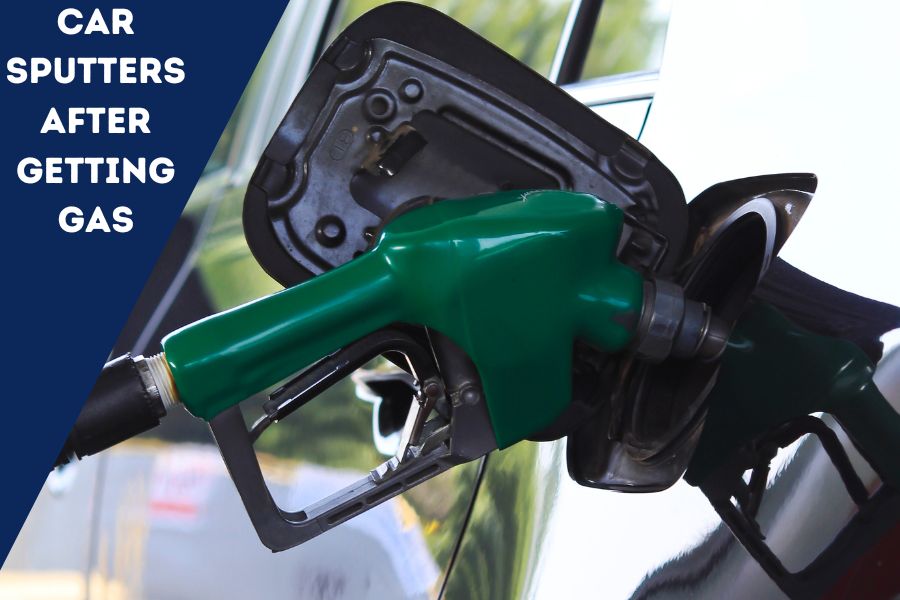
Cars were initially invented to serve humans and offer convenience.
They have been doing their service for many decades now, but their journey was not without challenges such as car sputtering after getting gas and other related issues.
Cars are complex machines. So we all know when there are some issues regarding them like car sputtering after getting gas, they can be a sign of bigger problems.
One of the issues that many car owners face is the car sputtering after getting gas. This issue might seem minor and insignificant but it can also be indicative of underlying problems, especially related to the EVAP system.
This article is intended to tell you everything you need to know about the EVAP system, its role in the vehicle, the reasons why the car sputters after getting gas, and solutions to the car sputtering after getting a gas problem.
You might also enjoy: Can A Weak Alternator Cause Poor Engine Performance? 2023 Answer
What is the EVAP system in a vehicle?
The Evaporative Emission Control (EVAP) System is a very important mechanism in modern cars. Knowing the function of this system can help you understand why your car sputters after getting gas.
The EVAP system is in charge of preventing harmful fuel vapors from being released into the atmosphere. These vapors are captured and stored in a charcoal canister.
The mentioned vapors are later purged and eliminated from the canister when the engine starts running. The vapors will be burned in the engine, thus reducing harmful emissions.
The Evaporative Emission Control (EVAP) system comprises several mechanisms and elements, such as the fuel tank, the purge valve, the vent valve, the charcoal canister, and connecting hoses.
Each of the components that make up the EVAP system plays a pivotal role in certifying that fuel vapors are effectively captured, stored, and later used in combustion. So if your car sputtering after getting gas is irritating you, proceed to learn how the EVAP system functions.
What is the function of the EVAP system in a vehicle?
Capturing fuel vapors that would otherwise escape from the fuel tank can be considered the primary function of the EVAP system
The EVAP system captures these vapors and directs them to the charcoal canister. The fuel vapors will be stored in the charcoal canister until the engine is in a condition to burn them.
When the time to burn the fuel vapors in the engine has come, the purge valve is in charge of controlling the flow of these vapors from the canister to the engine.
Under optimal and right conditions the engine’s computer opens the purge valve and allows the vapors to be drawn into the engine and get burned. This process can be very important to vehicles that are experiencing car sputtering after getting gas. But why was the EVAP system introduced in engines in the first place? You will find the answer below.
What is the point of using the EVAP system in engines?
After global concerns were raised about the effects of the automobile industry on the environment, the EVAP system was presented as an answer to the world’s ecological concerns to ease the distress that people and scientists were facing.
If the fuel vapors are out into the atmosphere, they start contributing to pollution creation, and since they are very harmful to the environment, preventing them from being released into the air is almost vital.
The EVAP system was invented to help reduce vehicle emissions by capturing and burning these harmful vapors, making cars more eco-friendly.
Moreover, optimal fuel efficiency was ensured as a consequence of this system’s employment.
So by utilizing these vapors in combustion, the engine and the EVAP system’s functions caused a better fuel economy. But we are still confused about the reasons why the car sputters after getting gas.
Car Sputters After Getting Gas: Top 10 Causes and Solutions
Car sputtering after getting gas could be a very irritating problem, especially if there are some underlying issues causing car sputtering after getting gas that can make things worse for your vehicle in the future. So let’s know the reasons why your car sputters after getting gas:
1- The Gas Cap Is Not Properly Closed
-
What is the role of the gas cap in the vehicle?
Such a small component in every vehicle, the gas cap is much more than what it appears to be. Your vehicle’s gas cap has a crucial role in maintaining the pressure balance within your car’s fuel tank. It might seem like a simple job, but the lack of a proper and correctly sealed gas cap can cause many issues.
The fuel cap of your car also prevents harmful pollutants from being released into the atmosphere and if the gas cap is not sealed and tightened properly, it can lead to an imbalance in the fuel system, causing issues such as car sputtering after getting gas.
You might also enjoy: How Many Brake Pads Come In A Box? [2023]
-
Why is it important to have a tight seal
Fuel vapors are bound to remain inside the fuel tank and related parts and a tight seal is essential to prevent them from escaping into the atmosphere.
Maintaining the correct pressure in the fuel tank is another job of the gas cap and when the seal is compromised, it can lead to a myriad of issues, including reduced fuel efficiency, increased emissions, and even potential damage to the car’s EVAP system.
-
Troubleshooting tips
If you can guess that the vehicle’s gas cap is faulty, inspect it for any visible damage and check if it is loosened.
Make sure that the fuel cap is tightened properly after every refuel. If the fuel cap seems worn out while inspecting it, or if the cap is cracked, consider replacing it to make the car sputtering after refueling issues disappear.
Think of investing a small amount of cash in a new quality gas cap as a way to save the vehicle from more major costs down the line, and it would not even cost too much.
2- Stuck EVAP Purge Valve
-
What is the role of the EVAP purge valve?
Car sputtering after getting gas can be a classic sign of a stuck EVAP purge valve. The EVAP purge valve is a vital element in the car’s emission system which is responsible for controlling the flow of fuel vapors from the charcoal canister to the engine.
If your car’s EVAP purge valve is working well and how it is supposed to, it guarantees that the fuel vapors are burned off during the combustion process, reducing emissions and improving fuel efficiency.
But if your vehicle’s EVAP purge valve is stuck, this issue can lead to a sputtering engine post-refueling, because this valve releases fuel vapors back into the engine for combustion and if it is stuck open, then it can disrupt the air-fuel balance, causing the situation of car sputtering after getting gas.
-
How to know if our vehicle has a stuck purge valve?
If you suddenly notice a decrease in fuel efficiency, rough idling, or difficulty starting the car along with car sputtering after getting gas, it is a very good sign that your vehicle is experiencing a stuck or malfunctioning EVAP purge valve.
This situation can lead to several issues such as the mentioned ones and in some cases, it might even trigger the check engine light, alerting you about the situation and how the car’s issues need immediate attention.
-
How to address a stuck purge valve?
If you are looking for some troubleshooting tips, you should pay attention to the car’s symptoms and conditions. But if you suspect a problem with the EVAP purge valve, try checking it with a skilled and experienced mechanic.
Professional and skilled mechanics can conduct a thorough examination and change your car’s purge valve if it is needed to do so.
And of course, if you want to avoid such problems and issues, we recommend regular maintenance and checks as needed. They can prevent such issues from arising in the first place.
3- Blocked Charcoal Canister
-
The part of the charcoal canister in modern vehicles
As you already know and read earlier in this article, the charcoal canister is a component of the EVAP system.
This part of the EVAP system is supposed to capture the fuel vapors before they can leak into the atmosphere.
The problem is that the charcoal canister can do its job perfectly for a long time, but over time the canister can also become saturated, especially if the car is frequently overfilled with fuel. This can cause some issues that can lead to your car sputtering after getting gas.
-
What are the symptoms of a blocked charcoal canister in your car?
If your vehicle has a blocked or saturated charcoal canister, then it can lead to several issues.
Your car might sputter after refueling or stall after refueling. This can be a common issue.
Another sign of this issue could be a strong fuel odor, especially when the car is idling, which can be stressful at times.
-
Keeping the charcoal canister working
Now if you are experiencing the symptoms of a blocked charcoal canister, it is probably too late to maintain it and you need to ask a professional repair technician for help.
So if you are doubtful about the canister being blocked or saturated, just reach a mechanic and consult them. A professional mechanic can easily examine the charcoal canister and change the element if it is required.
But keeping the charcoal canister in good condition can reduce the chances of having to deal with a blocked one.
If you want to prevent issues with the charcoal canister, avoid overfilling your car’s fuel tank.
4- Damaged Vent Valve
-
The vent valve’s function in vehicles
The vent valve is a very important part of the EVAP system. It would not allow excessive vacuum pressure in the fuel tank by permitting air to enter the system.
If your vehicle’s vent valve is broken or malfunctioning for whatever reason, it can lead to an imbalance in the fuel system, leading to issues like car sputtering after getting gas.
You might also enjoy: Car Rattles When Idle:17 Causes And Solutions [2023]
-
Faulty vent valve symptoms
Reduced fuel efficiency is just one consequence of a malfunctioning vent valve. Other symptoms of vent valve issues include difficulty starting the car or even a triggered check engine light.
If the vehicle’s vent valve is not working how it should be, you are likely to notice such issues. However, since these issues can be very similar to the symptoms of other components’ failures, we suggest getting help.
Ask a skilled mechanic to diagnose your car if you are confused.
you can also check this:
-
Fixing vent valve problems
If you are looking for a way to prevent issues with the vent valve, try regular inspections and on-time maintenance
Once you figure something is wrong with your vehicle’s vent valve, consulting with a mechanic is the only reasonable action. A detailed scrutiny would be conducted by them and if your vehicle requires any replacements, they would do it for you.
5- Kinks or Bends in the Fuel Vapor Hoses/Tubes
-
What is unobstructed fuel vapor hoses’ significance?
Transporting fuel vapors from the fuel tank to the charcoal canister and then to the engine is the main job of the fuel vapor hoses.
So if any obstruction like kinks or bends, disrupts this flow, it would lead to an imbalance in the fuel system which can be harmful and irritating.
-
How do we identify issues with hoses in the car?
The best way to make sure that the hoses are functioning properly is to regularly inspect them for any visible signs of damage and wear.
Addressing the issue is your important priority if you spot any kinks, bends, or cracks.
You do not want to ignore such issues or postpone their repair because they can lead to more significant issues down the line.
-
How to protect my fuel vapor hoses?
Preventing issues with the fuel vapor hoses is always a priority when it comes to vehicle repairs. Try not to miss any of the regular maintenance sessions. Timely checks can prevent such issues if you want to keep your vehicle safe and running smoothly.
Certify that fuel vapor hoses are properly placed and are free from any obstructions, but if you notice any impairment, replacing the hoses is the only option. This is the best way to approach such issues with the fuel vapor hoses.
6- Bad Fuel Pump
-
What does a fuel pump do in a vehicle?
Transporting fuel from the tank to the engine seems like an important job, right?
Well, the fuel pump is obviously in charge of that and if it does not do a good job, then a failing fuel pump can result in an inadequate fuel source and cause the car to sputter after getting gas or stall.
So we can say that a bad fuel pump is responsible for your car sputtering after getting gas.
-
How can I tell if my car has a bad fuel pump?
If the fuel pump is weakening or malfunctioning, you might note that there is an obvious decrease in fuel efficiency. Having difficulty starting the car, or even a whining noise from the fuel tank are other symptoms of a bad fuel pump.
So if you cannot diagnose the problem judging by these symptoms, then ask a professional to do it for you.
-
How can I address fuel pump issues myself?
Once the proper function of the vehicle’s fuel pump seems questionable to you and you start suspecting if there is some kind of problem with the fuel pump of your vehicle, consult with a skilled mechanic.
Your vehicle’s mechanic will check the car for any signs of damage and malfunction. Then they will let you know if any replacement is needed for the optimal performance of the engine.
Do not forget about regular maintenance and checks because they can also prevent such issues from arising which can be very helpful.
7- Overfilling of Fuel Tank
-
Why is overfilling the vehicle’s tank bad and harmful?
Overfilling the tank, as tempting as it might be, can lead to several issues.
Squeezing a little extra fuel in during a fill-up can cause fuel to enter the EVAP system’s sensors and solenoids, leading to malfunctions that can cause issues such as car sputtering after getting gas.
You might also enjoy:10 Key Differences between 4.3 and 4.3 Vortec [2023]
-
How to prevent overfilling the fuel tank?
Filling the fuel tank to the right amount can be tricky. But you can prevent overfilling the fuel tank by paying attention when refueling and stopping when the pump automatically shuts off.
Remember to avoid the impulse to add more fuel all the time because the little extra amount of fuel can lead to overfilling and subsequent issues like the car sputtering after getting gas.
8- Replace Faulty Spark Plugs
-
What is a spark plug in a car?
Spark plugs are other essential mechanisms of a vehicle’s ignition system. They are vital for the proper ignition of the air-fuel mixture in the combustion chamber, which keeps the engine running.
A little bit of material is eroded from its electrodes once a spark plug fires each time. Consequently, this erosion can cause the spark plugs to wear out when they combine with the deposits that make up the plug.
-
Worn-out spark plugs’ impact on your vehicle
Spark plugs are the components of your car that need to be replaced once in a while, depending on your driving habits.
If the spark plugs are worn out and you do not replace them in time, they can cause a myriad of problems, including misfires that can lead to unpredictable and poor engine performance.
Other consequences that leaving worn-out spark plugs can cause are:
- Incomplete combustion taking place in the vehicle’s system would reduce the fuel efficiency
- Difficulty starting the vehicle is another common consequence of this issue.
- Harming the environment is another result of this situation because of the increased emissions that may cause the vehicle to fail emission tests.
- If you know about the costs of replacing the catalytic converter, you should also know that potential damage to the catalytic converter is another consequence.
-
The solution of worn-out spark plugs causing car sputtering after getting gas
Replacing the worn-out spark plugs as soon as you can is the solution to this problem that can lead to the car sputtering after getting gas
If you want to address the issues caused by worn-out spark plugs correctly, you need to do these things:
- Regular examination of spark plugs: Keep in mind to examine the spark plugs during regular vehicle maintenance. Any signs of tear, wear, deposits, or damage should be carefully spotted and addressed.
- Follow the manufacturer’s recommendations: Every vehicle manufacturer is bound to provide guidelines for the vehicle owners on when and how often to replace spark plugs. Optimal vehicle performance is a result of adhering to these recommendations. So pay attention to the vehicle manuals.
- Choose high-quality spark plugs while replacing old and worn-out ones: The newly installed spark plugs must match the vehicle’s specifications. So keep in mind to select the high-quality spark plugs that are compatible with your vehicle while replacing. This way you can guarantee that you will not need extra precautions down the road,
- Finally, seek professional help: If you are uncertain about the situation of the spark plugs, professional mechanics will let you know if you need any replacements or repairs. Consult with a skilled one and you will not regret it.
You might also enjoy: 8 Ways to Stop Brakes From Squeaking Without Taking Tire Off? [2023]
9- Inspect the MAF Sensor
-
What is a Mass Air Flow (MAF) sensor?
When we are talking about a car sputtering after getting gas, a failing MAF sensor can be a factor.
Measuring the amount of air that enters the engine is one of the main jobs of the Mass Airflow (MAF) sensor. This sensor also communicates this information to the vehicle’s computer for essential analysis and other purposes.
The vehicle’s ECU then uses the statistics from the sensor to regulate the correct and exact amount of fuel that should be injected into the combustion chamber. This process guarantees an optimal air-fuel ratio.
-
Problems Associated with a Faulty MAF Sensor
A malfunctioning MAF sensor can be very harmful and irritating. This sensor can cause rough idling or stalling, along with other symptoms such as reduced fuel efficiency.
Having difficulty starting the vehicle is another sign that reflects a failing MAF sensor, and many more issues will be created if the MAF sensor is not working properly.
Increased emissions and an illuminated “Check Engine” light on your car’s dashboard are other consequences of a malfunctioning MAF sensor in the car. This problem can be the reason why you are experiencing car sputtering after getting gas.
-
Solution: Addressing MAF Sensor Issues
To block car sputtering after getting gas problems that are associated with a faulty MAF sensor, we recommend these steps:
- Check the sensor regularly: Try to inspect your vehicle’s MAF sensor for dirt, debris, or damage during routine vehicle checks to make sure everything is alright with the sensor.
- Cleaning the MAF sensor: Dirt and debris can accumulate on the sensor over time which can cause troubles regarding this component.
- Using an MAF sensor cleaner allows you to clean the MAF sensor without causing further harm. This can be a very good idea if you want to prevent future breakdowns without replacing the sensor itself. This method can also resolve the issue if a malfunctioning MAF sensor is causing the car to sputter after getting gas.
- Replace the faulty component: If cleaning doesn’t resolve the issue of the car sputtering after getting gas, or if the sensor is damaged, consider replacing the MAF sensor to fix the problems.
- Consult a Mechanic: If you do not know how to address the MAF sensor issues, or even if you are uncertain about the sensor’s state, look for experts’ advice before doing anything to make the problem worse.
You might also enjoy: Mitsubishi Outlander PHEV Problems – [2023 Update]
10- Regular Maintenance
-
The Importance of Regular Maintenance
As necessary as regular health check-ups are to us humans, regular vehicle maintenance is essential to our cars.
Periodic health assessments can help us find out if our health is being compromised and allow us to prevent potential ailments.
Regular car examinations can confirm that the car works smoothly, efficiently, and safely.
-
Why should I maintain my vehicle regularly?
If you want to prolong your vehicle’s life, consistent checks and well-timed maintenance are excellent ways that can extend the lifespan of your car.
Doing this also guarantees improved fuel efficiency, something that is good for the engine, fuel costs, and the environment. Addressing issues on time can always lead to better fuel efficiency.
Regular maintenance can also certify your safety. Regular inspections can identify potential safety hazards, ensuring the safety of the vehicle’s occupants.
Cost savings are also another reason why you should check your car’s condition more often. Spotting and addressing insignificant problems in your vehicle’s system can avoid major, more expensive repairs down the line.
-
Solution: Adopting a Regular Maintenance Routine
Follow these steps if you want to prevent major issues. Regular maintenance can keep the car sputtering after getting gas away:
- Follow the Manufacturer’s Guidelines: Your vehicle should come with an owner’s manual. You can find the recommended maintenance schedule that the vehicle manufacturers have provided there. Adhering to this schedule is the easiest way to maintain the optimal vehicle performance.
- Regular Oil Changes: As you know, the oil that you are supposed to change once in a while lubricates the engine and is supposed to prevent wear and tear of the system’s components. Change the oil at recommended intervals to avoid experiencing car sputtering after getting gas and many more issues.
- Check Fluid Levels: Top up the essential fluids promptly and make sure you regularly check them. The essential fluids include brake fluid, transmission fluid, and coolant.
- Inspect Tires: Tread depth and tire pressure must be checked and optimized on time. Neglecting this is both dangerous for you and harmful to the engine. You should also rotate tires periodically to guarantee even wear.
- Seek Professional Services: There is no denying the fact that some maintenance tasks can be done at home efficiently. However, it is helpful and sometimes even necessary to have a professional and skilled mechanic check the vehicle occasionally.
Every Possible EVAP System OBD2 Codes
The On-Board Diagnostics system is crucial in modern cars because it can detect what is wrong with your car and let you know if there is any problem.
The OBD2 II system in modern cars can generate various codes associated with the EVAP system. You need to use an OBD-II scanner to extract and read the trouble codes. This is the best way to figure out what is wrong with your car and fix it. Some common codes include:
- P0440: There is a general failure or malfunction within the EVAP system.
- P0441: The ECU has detected improper purge flow that needs addressing.
- P0442: This code generally means that a small leak was detected in the EVAP system.
- P0443: Purge valve circuit malfunctions usually cause the creation of this trouble code within the OBD II system.
- P0446: Vent control circuit malfunctions are why the P0446 trouble code appears on the OBD II scanner. Address the issues.
- P0455: Large leaks in the EVAP system cause the OBD system to create this trouble code.
- P0456: This code indicates that a very small leak was detected in the EVAP system. Fix the issues to make the code disappear.
By using an OBD II reader and plugging the device in the proper port, you get to extract and read the trouble codes that are related to the EVAP system (or any other system in the vehicle).
The codes need interpretation and you will probably need to look them up.
These codes provide information about potential issues with the EVAP system. The trouble code, if interpreted correctly, can guide mechanics in troubleshooting.
You can use an OBD2 scanner to read the trouble codes and also to make sure there is no issue with the car. You can use it to fix any existing one, too.
People experience car sputters after getting gas
1- Maria’s Encounter with a Blocked Charcoal Canister
“I am a 28-year-old teacher. I have plenty of free time so I am pretty attentive about my car maintenance. That is why I was so shocked when I started to notice some issues like the car sputtering after getting gas.” Maria says.
“It was puzzling,” she continues. “My car was examined and maintained regularly, and I couldn’t figure out why my car was sputtering after getting gas.
I am a little bit old-fashioned so I do not believe in online research, but I googled the problem and found this article online. I was intrigued by the section on the charcoal canister because I tend to overfill my car’s tank in the past month, just to make sure the tank is full.”
She realized maybe that caused the car sputtering after getting gas. So decided to take her vehicle to the closest professional mechanic and have the car inspected.
“The mechanic later confirmed that the reason behind the car sputtering after getting gas was that the charcoal canister was saturated. He replaced the canister and my car was back to its optimal performance. Now I have learned my lesson. Overfilling the tank is not a wise choice.” She said.
2- David’s Experience with a Loose Gas Cap
David is a 35-year-old software engineer. He had recently bought a secondhand sedan for his daily commute but a few weeks into driving it, he noted his car sputtering after getting gas.
He says “It was frustrating. I had to go through the same trouble each time I refueled my vehicle and I was very concerned.
I had just started doing some research online when I came across an article about car sputtering after getting gas on a blog. I found the solution because I instantly checked the fuel cap for any signs of wear or damage, and I immediately realized that the cap was not sealed properly.
I tightened the fuel cap, and just to be on the safe side I replaced it with a new one. I cannot believe I had to go through all the anxiety while the solution was so simple and cheap. No more car sputtering after refueling for me!”
3- Alex’s Battle with a Bad Fuel Pump
“As a 40-year-old freelance photographer, I am on the road for long hours traveling for shoots almost every day. On one such trip, I found my car sputtering after getting gas. It was unsettling, making me very nervous since I was miles away from home. Also, if my car broke down, my projects would be left unfinished. I hate angry clients!”
Alex started searching for solutions online. Then he found our article on car sputtering after getting gas and read about the potential issues with the fuel pump.
“Because of the matching symptoms including decreased fuel efficiency and a whining noise, I was immediately convinced it was the fuel pump. So I visited the nearest mechanic asking for help. He confirmed my doubts and told me that there is no major problem regarding my car and I only need to replace the fuel pump.” he says.
His car was as good as new and he was relieved about the car and the projects. He continued “The problem was fixed right away. I was so thankful for the guidance and happy because I am always on the road, and I can’t afford such major issues.”
FAQs
- What is the main job of the EVAP system in a car?
The main role of the EVAP system in a modern vehicle is capturing the harmful fuel vapors to burn them later. Preventing them from escaping into the atmosphere is another job of this system.
- Can a faulty EVAP system reduce the vehicle’s fuel efficiency?
Yes, a leak or malfunction in the EVAP system’s components can surely impact the fuel efficiency of the vehicle and you must take care of that.
- How often should the EVAP system be inspected and checked?
Regular vehicle maintenance is a must for any vehicle. It is recommended to have the EVAP system checked during every regular maintenance session to keep the optimal performance.
- What causes the OBD2 code P0442?
If the OBD2 trouble code is P0442, it shows that there is a small leak in the EVAP system that should be addressed quickly.
- Is it expensive to repair the EVAP system?
Repair costs of the EVAP system differ based on the specific issue and the vehicle model. Make sure to ask for professional advice and opinions before deciding anything on your own.
- Can I drive with a malfunctioning EVAP system?
While it might not hinder driving and you can still drive safely with a failing EVAP system, it’s environmentally damaging and can lead to other issues in other parts of the engine.
How does the charcoal canister work?
The charcoal canister captures and stores the fuel vapors, freeing them later to be burned in the engine when conditions are optimal.
Hope you have enjoyed this blog and all the information it provides. Check Phoniex Car Magazine for more articles like this!


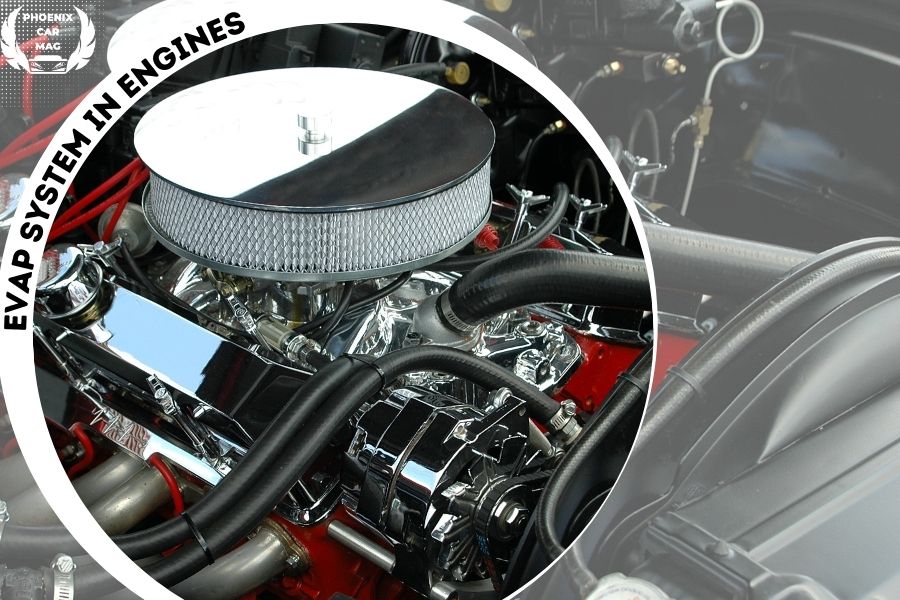
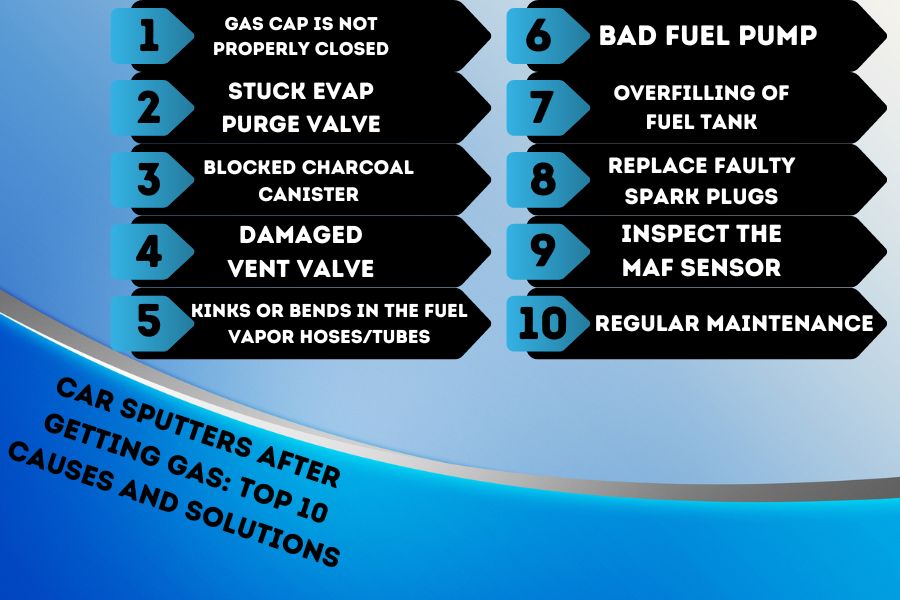
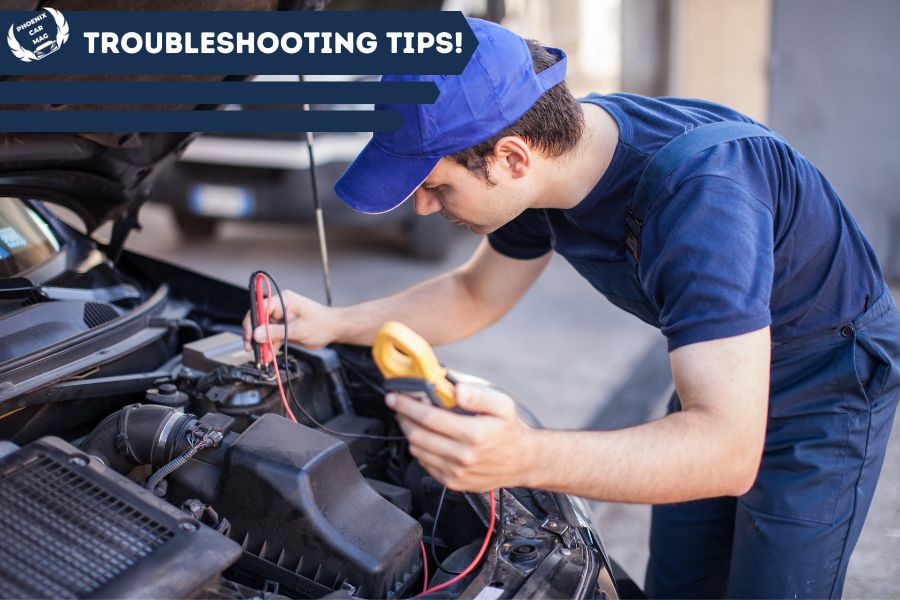
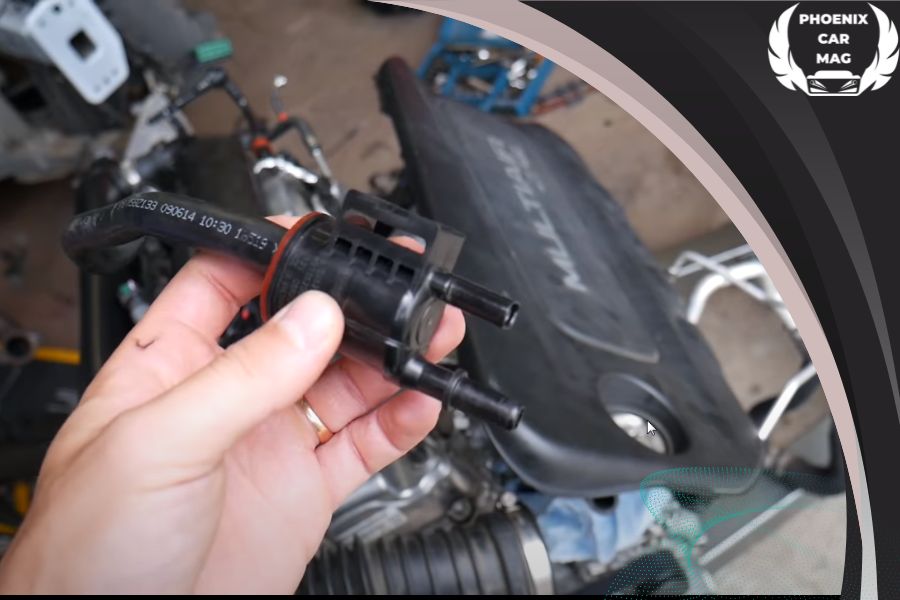
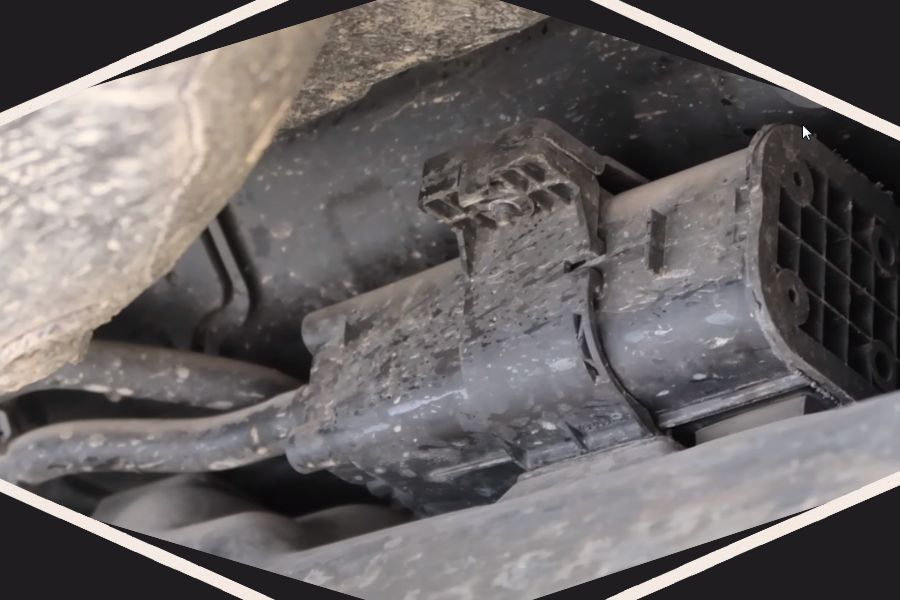
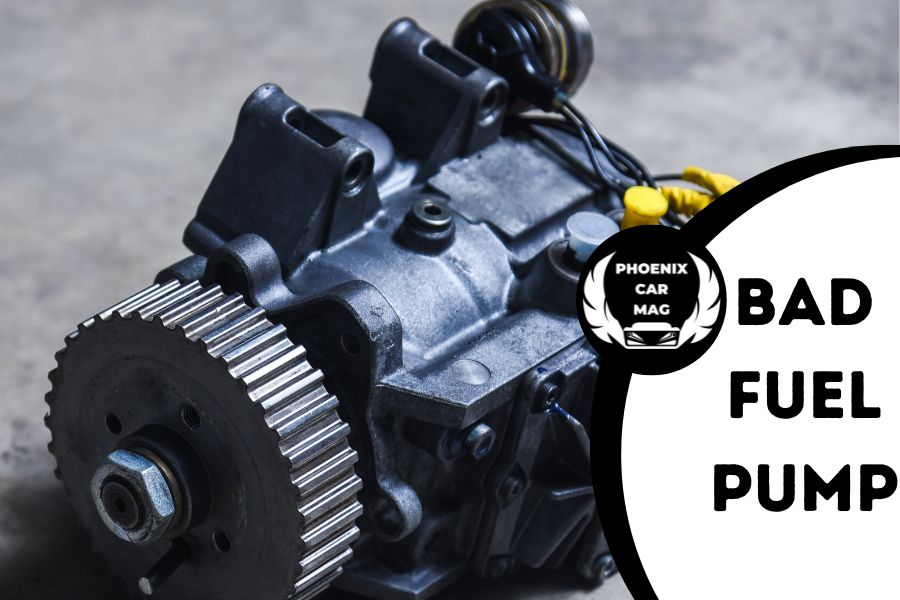
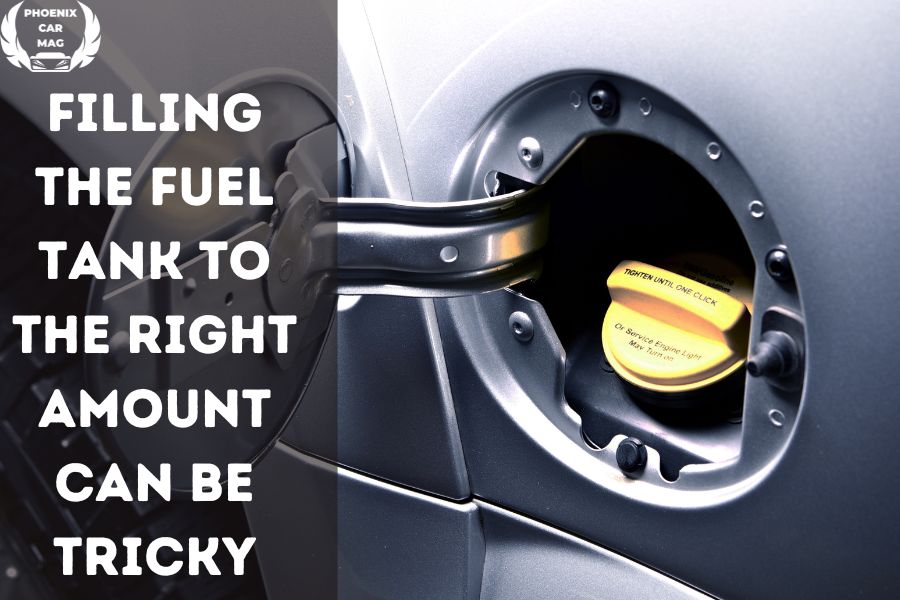
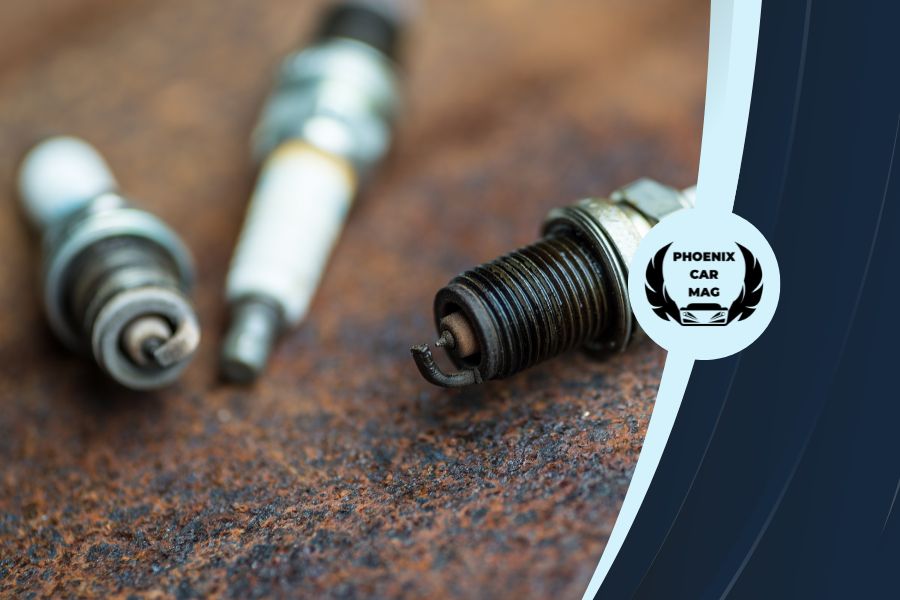
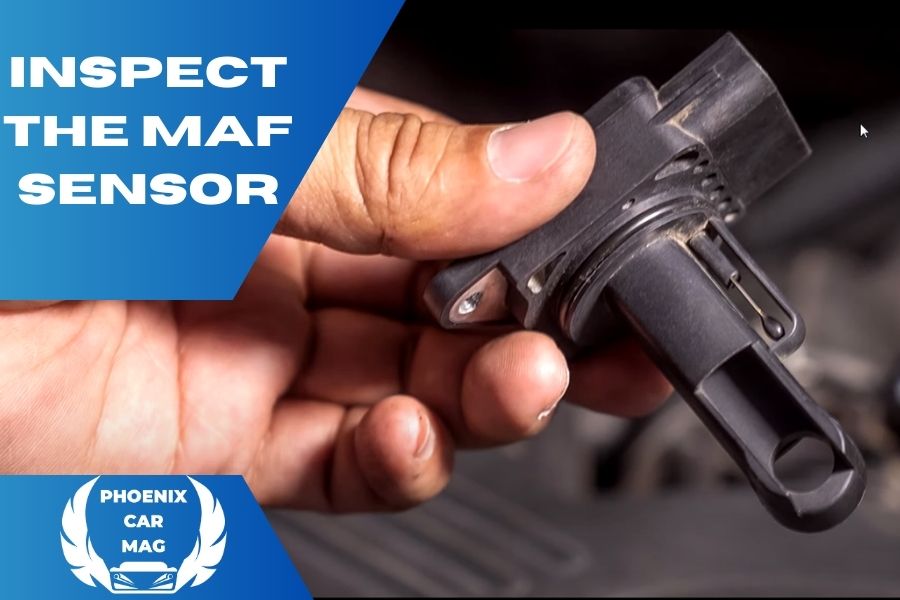
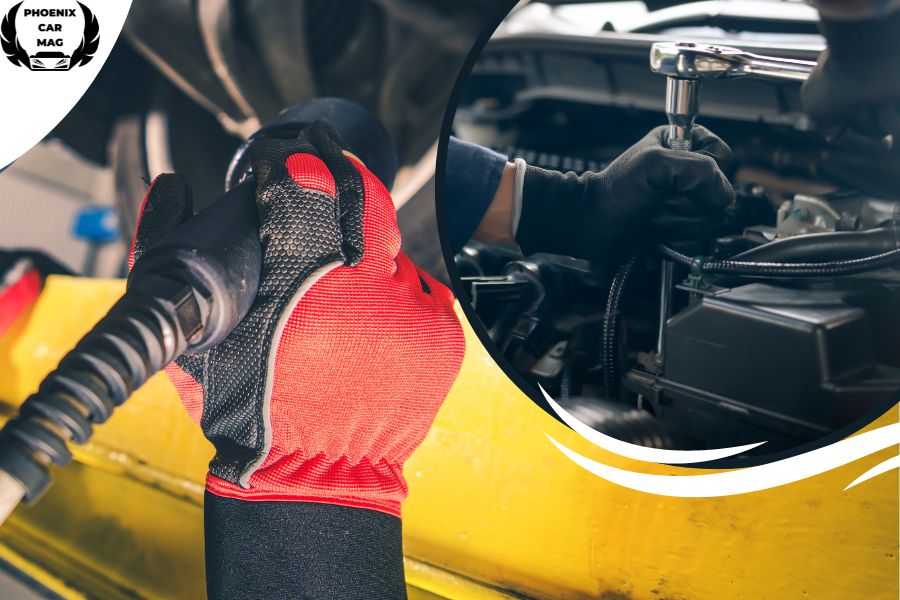
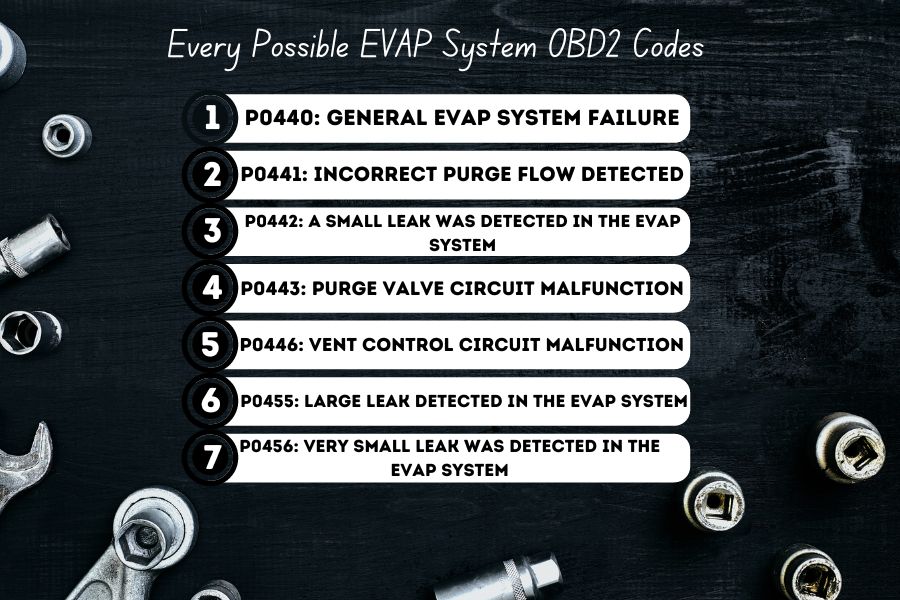
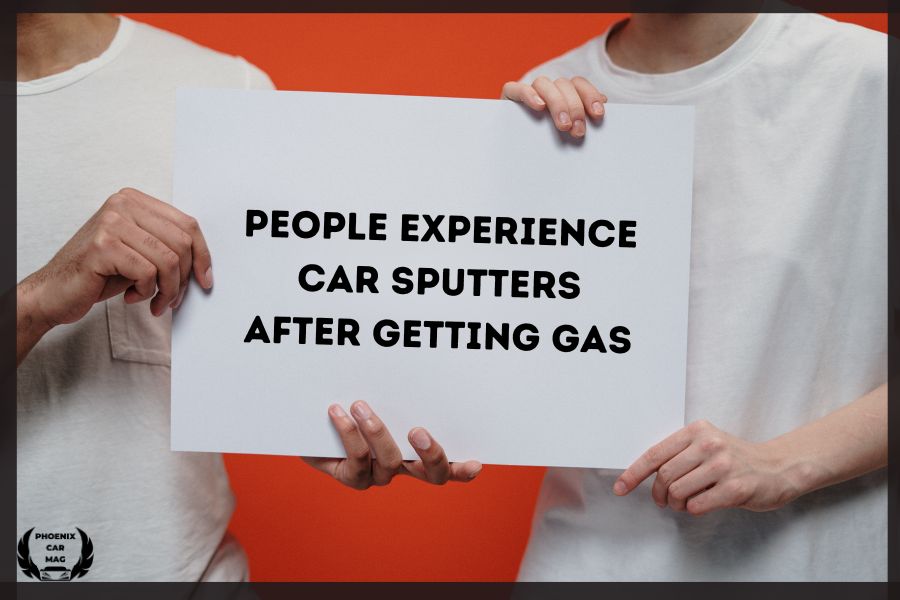


![Brake Fluid Change: Costs + Signs + Everything [2024]](https://phoenixcarmag.com/wp-content/uploads/2024/01/Brake-Fluid-Change-Costs-Signs-Everything-2024-2-308x180.jpg)
![8 Ways to Stop Brakes From Squeaking Without Taking Tire Off? [2023] 8 Ways to Stop Brakes From Squeaking Without Taking Tire Off? [2023]](https://phoenixcarmag.com/wp-content/uploads/2023/09/8-Ways-to-Stop-Brakes-From-Squeaking-Without-Taking-Tire-Off-2023.jpg)